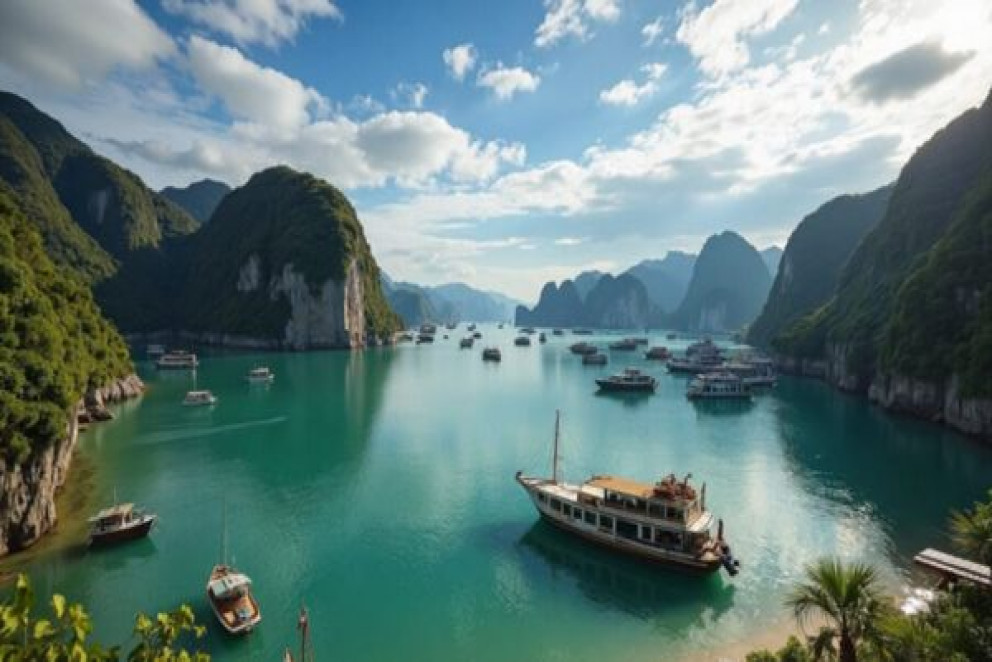Blog Details

India Emerges As A Tourism Powerhouse, Rapidly Beating China And U.S.
The global tourism industry is currently witnessing a noticeable deceleration, with some of the world’s largest markets, such as China and the United States, experiencing significant slowdowns. This trend is raising concerns among industry stakeholders, as these markets have traditionally been strong drivers of global tourism growth.Various factors, including economic uncertainties, shifting consumer behaviors, and ongoing geopolitical tensions, are contributing to this sluggishness. These challenges are reshaping the landscape of the tourism industry and prompting businesses to reassess their strategies to attract travelers.
In the United States, the International Monetary Fund (IMF) has forecasted a slowdown in economic growth. The cooling of the U.S. labor market, alongside reduced consumer spending and the gradual tightening of fiscal policy, is expected to contribute to this trend. According to the IMF’s projections, U.S. economic growth is anticipated to decelerate to 1.9% by 2025.
These economic conditions are likely to have a direct impact on domestic and international travel demand, as consumers may become more cautious about discretionary spending, including travel and leisure activities.
Research conducted by Northeast Securities highlights the ongoing challenges facing the U.S. hotel industry. Since April of last year, the occupancy rates in U.S. hotels have shown a slight year-over-year decline, remaining approximately 5% below the levels observed during the same period in 2019.
This persistent downward pressure on occupancy rates suggests that the industry is still grappling with the aftermath of the pandemic, coupled with evolving travel preferences and economic uncertainties. The hotel industry is thus faced with the task of innovating and adapting to these new realities to maintain and boost occupancy rates.
China, another major player in the global tourism market, is facing similar headwinds. The country’s hotel sector is experiencing a downturn, with key performance indicators reflecting these challenges. In the second quarter, the Revenue per Available Room (RevPAR) for major hotel chains like Marriott and IHG in the Greater China region saw declines of 4% and 7%, respectively.
Wyndham Hotels & Resorts faced an even more significant drop, with RevPAR plunging by 17%. These figures indicate that the Chinese market, despite its vast potential, is currently struggling to regain its pre-pandemic momentum.
Furthermore, India’s rise in the tourism sector is also driven by its appeal as a hub for wellness and spiritual tourism. With its ancient practices of yoga, Ayurveda, and meditation, India attracts visitors seeking holistic health and spiritual rejuvenation. Wellness retreats, yoga centers, and Ayurvedic resorts are flourishing, drawing both international and domestic travelers looking for a unique blend of relaxation and cultural experience. This focus on wellness tourism not only differentiates India from other destinations but also capitalizes on the growing global trend towards health and wellness in travel.
The rapid growth of India as a tourism powerhouse is a testament to its diverse offerings and the effective promotion of its cultural and natural wealth. As the world’s perception of travel evolves, India’s emphasis on unique, authentic experiences resonates with the preferences of modern travelers.
By continuing to enhance its tourism infrastructure and marketing efforts, India is well-positioned to become a leading destination in the global tourism market, even as traditional giants like China and the U.S. face challenges in sustaining their growth.
Source: Travel And Tour World



